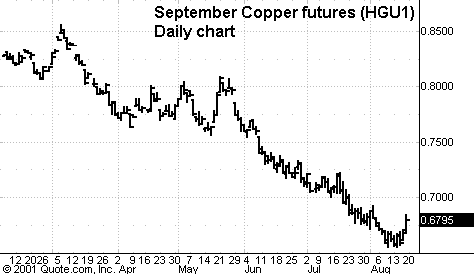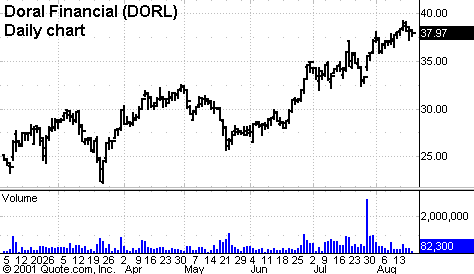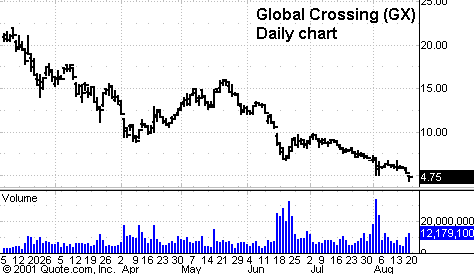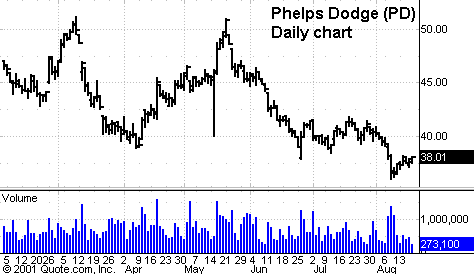Dollar Blues Weigh On Retest
This
week the world started to realize how serious the slowdown in the
U.S. was and the dollar has become the casualty of it, weakening seriously and
putting in what appears to be a major top of the multi-year bull market of the
dollar that was one of the major lynchpins of the bullish stock market
environment.yes”> One would expect the dollar to weaken some before a global economic
recovery in response to reflation abroad and a market discounting of higher
rates of growth in the rest of the world. Instead the dollar is
falling because global investors are anticipating further weakness in the U.S.
The dollar’s strength was one of the only stimuli that Europe and Japan
had. Now what we have is essentially a
competitive devaluation of the dollar, which will help the U.S. a bit in the
short run but will make recovery abroad much more difficult, which will in turn
weigh on our economy and markets soon down the road.
So this devaluation simply prolongs the malaise the economy and markets
are in and makes the environment more potentially dangerous.
Investors need to watch the dollar carefully now.
Substantial further continued weakness will begin to force the markets to
decline in sync. Â

Thus,
the retest of the March-April lows continues and the bearish case gains some
fuel. We
still need some follow-through days and evidence of breadth entering the market
on the bullish side before we can assume an intermediate-term low is upon us.
Continue to watch closely for two, or preferably more, of the
breadth-thrust indicators we’ve been enumerating for the last few weeks to
materialize before getting exciting about a sustained bullish move.
Economically
sensitive commodities are still troublesome. Bonds
are behaving bullishly, and copper is making new lows and has been the best
indicator of future stock market trends for the last couple years.
Lumber is rallying, which is the main plus, while cotton has also made
new lows. It is very unlikely that we’ll
get a decent recovery economically while cotton and copper are making new lows,
as they usually lead a recovery by many months. A
sharp move down by bonds and up by cotton and copper will tell us that the
markets are finally starting to anticipate a sustained economic recovery.
Until we get this, we would be surprised to see a sustainable up-move in
stocks in general.
 Â Â
 Â
AÂ
look at the numbers from our stock lists tells us that the trading-range
environment continues. Wait for real indications of breadth one way or another,
which appears absent right now. New
Highs vs. New Lows on our RS/EPS lists were
14/20, 19/18, 34/14, 29/11 and 27/20 — showing no strength to the bulls or bears
once again. Continue to wait and watch for something real —
like days of new highs or new lows on our lists above 50 daily and above 100 a time or two
each week again before becoming eagerly bullish or eagerly bearish. While
top RS/EPS new highs appeared to slightly edge out bottom RS/EPS new lows, the
quality of both new highs and new lows was poor this week with no signals and no
close calls on the nine breakouts up and nine breakdowns of four-plus-week
consolidations that occurred on our lists.
Our
overall allocation is now DEFENSIVE with 76% in T-bills awaiting new
opportunities. Our model portfolio
followed up weekly in this column ended 2000 with about an 82% gain on a 12%
maximum drawdown, following a gain of around 41% the prior year.
For year 2001, we are now up about 5.8% with a heavy cash position.
For
those not familiar with our long/short strategies, we suggest you review my
10-week trading course on TradingMarkets.com, as well as in my book “The
Hedge Fund Edge” and course “The Science of Trading.“Â
Basically we have rigorous criteria for potential long stocks that we
call “up-fuel,” as well as rigorous criteria for potential short
stocks that we call “down-fuel.” Each day we review the list of new highs on our “Top RS and EPS New
High list” published on TradingMarkets.com for breakouts of four-week or
longer flags, or of valid cup-and-handles of more than four weeks. Buy trades are taken only on valid breakouts of stocks that also meet our
up-fuel criteria. Shorts are
similarly taken only in stocks meeting our down-fuel criteria that have valid
breakdowns of four-plus-week flags or cup-and-handles on the downside. We continue to buy new signals and sell short new short signals until our
portfolio is 100% long and 100% short (less aggressive investors stop at 50%
long and 50% short). In early March
of 2000 we took half profits on nearly all positions and lightened up
considerably as a sea-change in the new economy/old economy theme appeared to be
upon us.
Upside
breakouts meeting up-fuel criteria (and still open positions) so far this year
are: Doral Financial
(
DORL |
Quote |
Chart |
News |
PowerRating) @36.1 (38.11) w/34.75 ops. Continue to
watch our NH list and buy flags or cup-and-handle breakouts in NH’s meeting our
up-fuel criteria — but continue to add just two per week and only in leading
groups.
Â

On
the downside, this year we’ve had breakdowns from flags (one can use a down
cup-and-handle here as well) in stocks meeting our down-fuel criteria (and still
open positions) in: Global Crossing
(
GX |
Quote |
Chart |
News |
PowerRating) @6.05 (5.75) — now use 6.75 ops;
and Phelps Dodge
(
PD |
Quote |
Chart |
News |
PowerRating) @38.1 (37.51) — now use 41 ops. Continue to watch our NL list daily and to short any stock meeting our
down-fuel criteria (see 10-week trading course) breaking down out of a downward
flag or down cup-and-handle. Here
too, remain cautious by only adding two shorts in a week, until we get
more consistency in the number of downside breakouts in a given week off of our
Bottom RS/EPS New Lows lists.


Scant
opportunities are developing in either direction here as the retest-trading-range
market environment goes on and on and on. Patience
and selection will continue to pay dividends, although investors should be
prepared for some whipsaws in this environment. Continue
to tell yourself the truth — it only takes a couple weeks of good environment
to make a year’s worth of profits in these markets.Â
